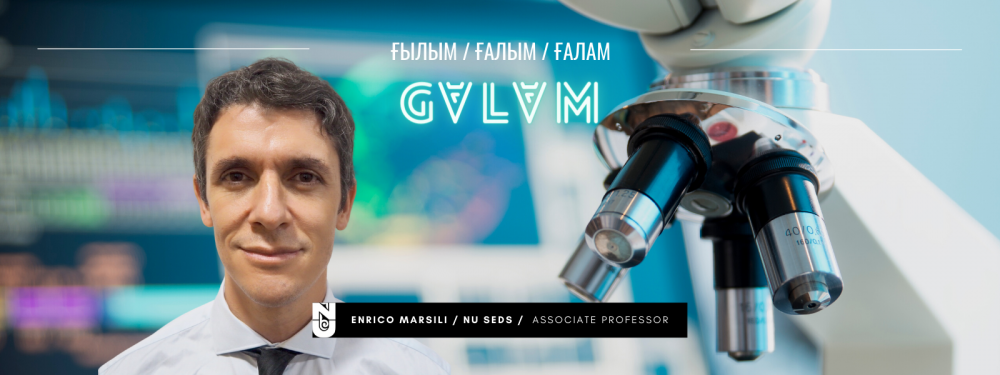Galym-Galam: Enrico Marsili, NU SEDS Associate Professor
Our next ‘Galym-Galam’ rubric guest is Enrico Marsili, NU SEDS Associate Professor. Dr Marsili obtained his doctorate in Chemical Engineering from the University of Rome, Italy, in 2004. After a postdoc in Anaerobic Microbiology at University of Minnesota, USA, he became lecturer at Dublin City University, Ireland. In 2012, Professor Marsili joined the newly established Singapore Centre for Environmental Life Sciences Engineering, NTU, Singapore, where he developed methods for electrochemical characterization of biofilms and microbially influenced corrosion. In 2019, Dr Enrico Marsili joined Nazarbayev University as Associate professor. His research interests span from bioelectrochemistry to biosensors and bioremediation.
Professor Marsili, can you please tell us about your current research project?
I am building a strong research group on Biofilms and microbial electrophysiology. In the last two years, I have built a well-equipped laboratory for bioelectrochemistry and medical biofilms. At NU, we are developing novel bioelectrochemical sensors that rely on the principles of electrophysiology to detect specific pathogens and to characterise the biofilm they form. Further, I engaged in a fruitful collaboration with the national oil industry to develop biofilm-based methods for enhanced oil recovery. We are now modifying an environmental microorganism, P. putida, to overproduce biosurfactants that accumulate at the oil/water interface, thus increasing oil extraction in the production water. I have ongoing collaborative projects with the University of Belgrade, Serbia, Biomedical Campus, Rome, Italy, and Kyoto Institute of Technology, Japan.
What are your key research findings?
While most of the electroactive strains have been isolated from environmental samples, under oxygen-limited or anaerobic conditions, researchers have so far overlooked the occurrence of electroactive strains in the human microbiome. We have recently observed a strong electroactive phenotype in Enterococcus faecalis, a human gut microorganism, which is linked to biofilm virulence. This finding can have a great impact on biofilm and pathogen control. I have recently extended this methodology to other pathogens like Candida albicans and Acinetobacter baumannii (manuscript in preparation). Other species found in the gut microbiome, such as Lactobacilli, are relevant to the food and bioprocess industry and may also possess electroactive phenotype. I plan to implement a high-throughput screening of mixed microbial consortia from these environments, to identify novel electroactive strains and study their electro-metabolism. In the end, this information will allow me to formulate novel electrochemically augmented bioprocesses. In addition to the local sequencing facilities at Lancaster University, the recently developed research connection with ICGEB (Trieste, Italy) will be advantageous to carry out the meta-omics and data analysis work needed for this project.
Why did you choose to join NU?
I was interested in moving to a young, dynamic University where I could play a strong role as researcher and mentor and engage high school students to continue their education in a supportive environment. At the time I joined, Kazakhstan and NU were on an ascending trajectory. While the pandemic has temporarily stopped this progression, I am convinced NU will attract the best students from the country and from the Central Asia region.
What are your future plans?
I plan to work on outreach with the Marketing and Media Outreach department to attract talented students from all regions of Kazakhstan. I intend to implement research-based course for undergraduates, which will result in higher student participation than conventional lecture-based courses. Finally, I hope NU will join the ICGEB consortium in order to increase international collaborations and attract talents from mid-income countries. Research-wise, I plan to continue my work on bioelectrochemical sensors to develop a patent for clinical applications.


